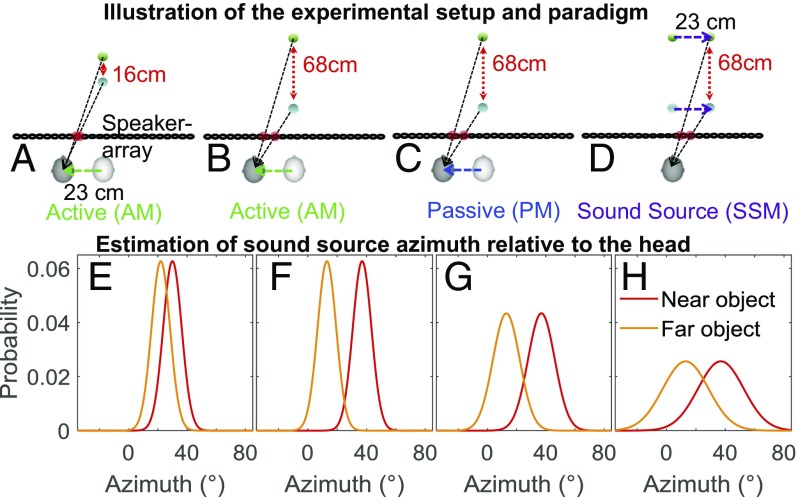Fig. 2.
Illustration of the setup and paradigm of Exp. II and the hypothesis. (A–D) Subjects were trained to move parallel to the speaker array with the same motion profile as in Exp. I. Subjects performed the motion either actively (AM) (A and B), or they were moved by a motion platform (PM) (C). In these conditions, tracking of the head motion relative to the array and the virtual sound sources allowed us to update the speaker activation in real time. In the SSM condition (D) the sound sources moved along the array but the subjects were stationary. Speaker activation is illustrated by the red area around the speakers. (E–H) With increasing depth separation, dynamic binaural cues get stronger (E and F). AM provides additional information (proprioceptive and efference copy signal) and leads to better discrimination (F). During PM, only vestibular signals provide additional information (G). Discrimination is therefore worse than for AM, but better than for SSM, where only dynamic binaural cues are present (H).

